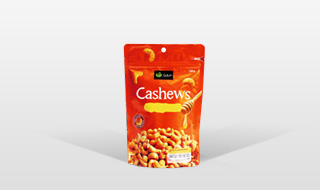 Tel: +86 188 2689 9458
Tel: +86 188 2689 9458
 Tel: +86 188 2689 9458
Tel: +86 188 2689 9458
source:Industry News release time:2022-09-24 Hits:

In most cases, products require packaging for protection purposes, but they can also facilitate shipping and handling. This packaging protects against shock, extreme temperatures and humidity, especially for potentially contaminated food products. The fully automatic case packing machine adopts pneumatic components without oil lubrication. Packaging is a useful resource for storage and efficiency when dealing with products for retail purposes. Food packaging machinery is designed to handle substances such as sugar and flour that workers cannot. Armed with this machinery, companies are able to provide fast and efficient means of packaging for many industries including food packaging, electronics, agriculture, manufacturing and pharmaceuticals. Packaging dates back thousands of years. Early packaging had to be done manually and was likely made of wood, skin, leaves and other similar materials. Over time, packaging is made from woven bags, baskets, straw and other containers such as ceramics.
During the 19th and 20th centuries, packaging machinery began to become more common. New packaging types were invented, such as bags, food packaging, storage boxes and retail packaging mainly made of paper. In 1894, Friedrich Hesser developed the first bagging machine for packaging goods. Later in 1890, Michael Owens invented the first automatic rotary bottle maker, which made glass containers popular from then until the 1960s. Plastics were subsequently introduced to the packaging industry in the early 1900s. In 1906, the first packaging machine for containing new materials was invented. After World War I, packaging machine manufacturers and inventors were busy figuring out new ways to pack goods efficiently. Consumers make extensive use of packaging such as cardboard boxes and metal cans in their daily use. Flexographic printing was invented in the late 1920s and allowed companies to print on their packaging more accurately. Packaging technology became so popular that Michigan State University became the first university in the world to offer a packaging engineering degree in 1952. During this time, advancements in the pharmaceutical and health industries began to utilize packaging machinery to pack materials more efficiently. Today, most packaging equipment is automated to increase efficiency and reduce production time. These machines are controlled by CAD and CNC machines to reduce labor costs. The goal for the future is to find more sustainable forms of packaging and equipment. Packaging equipment has many benefits. First, it's a very economical way for companies to package and distribute goods. They essentially eliminate labor costs for workers by using automated systems such as CAD and CNC machining. Packaging equipment also works well. These machines are able to control the product and dispense it correctly into the packs, eliminating accidental loss of goods, debris, and dispensing the right amount of product in each pack. Finally, the risk of worker injury is eliminated. Manufacturers have standard packaging machines in stock for purchase, but custom systems can also be ordered. Depending on your application needs, it is important to consider capacity, available floor space, labor requirements, required packaging quality, and energy requirements and constraints. Complex systems, such as machines capable of performing all basic packaging, can also be customized. The fully automatic case packing machine can be customized according to other special requirements and functions.
Read recommendations:
Hot Sale BPA Free Plastic Drink Juice Fruit Liquid Packaging Stand Up Bag Spout Pouch
coffee grinds pouch Production
The manufacturer of customized plastic food packaging bags tells you these points to pay attention t
Popular recommendation
Wholesale High Barrier Plastic Stand Up Flat Bottom Pet Dog Food Packaging Bag
Wholesale Price Biodegradable Aluminum 3 Three Side Seal High Temperature Microwavable Food Retort S
125g 250g 500g 1kg Aluminum Foil Flat Bottom Coffee Bean Bags With Valve
eco friendly spout pouches sales
Spout pouch flexibility price
spout pouch packaging Production
black coffee bags with valve
coffee grinds pouch Processing
packaging spout pouch wholesale
juice bag in box
The Revolution in Liquid Packaging
The printing principle of composite bags!beverage bag manufacturers
How to customize the packaging bag
What are the general forms of beverage and food liquid bags?
How to use the air hole on the coffee bag
Perforjuice bag in box.mance and requirements for chemical liquid packaging bags
Customized packaging bags according to product characteristics
What are the common packaging forms of liquid beverages?
Key Players in Bag-in-Box Industry
Sterilization classification and principle of sterile bags
Rapid Development of Composite Aluminum Foil Bag Industry
What packaging form is the bag in the box.bag in box wine
Analysis on the Development of Aluminum Foil Bags in the Current Industry
Modified atmosphere anti mildew packaging technology
What are the environmental characteristics of degradable plastic bags
Analyze the design requirements for food packaging bags
The necessity of using anti -fog packaging bags for vegetables.Flexible packaging film roll wholesal
Flexible Packaging's cutting requirements
Why is it easy to change the gas content in inflatable packaging of nut products?
The difference between packaging film and composite curl film.Flexible packaging film roll